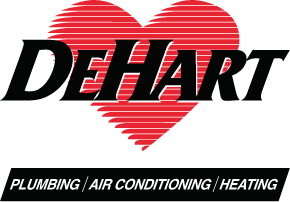You work hard to keep your home spotless. But while everything else in your home may seem clean and pristine, there may be harmful allergens and contaminants hiding in the air. These airborne pollutants can lead to health complications and infections, especially for those with a compromised immune system.
How can you tell if your home has been infiltrated by allergens? Today we go over the warning signs of poor air quality. We also give you tips for cleaning the air in your home and keeping harmful airborne contaminants at bay.
Signs That You Have Poor Air Quality
Since you can’t visibly see what’s lurking in the air, be on the lookout for these physical symptoms:
Coughing or Congestion
Coughing is one of the prevalent signs of poor air quality. This is because the low-quality air is loaded with particles that irritate your lungs. And with this comes coughing and increased phlegm production. So, if you find yourself having to clear your throat often, you probably have allergens floating in the air.
Sneezing and Allergic Reactions
You’ll also notice an increase in sneezing and watery eyes—or the hallmark signs of allergies. Airborne allergens like mold, dust, and pet dander can cause allergic reactions like sneezing, watery eyes, and throat irritation.
Skin Dryness
Have you been experiencing dry patches and itchy skin no matter how much moisturizer you pack on? It’s not your skin; it’s the air. Dry air zaps your skin of its natural oil—leaving it dry and itchy. Also, the pollutants in the air can damage your skin’s outer barrier, which makes your skin lose moisture easily.
Headaches
If you’ve been experiencing lingering headaches with no known cause, there could be something in the air. Contaminants like pesticides and cleaning products affect air quality and cause side effects like headaches.
Poor Sleep
Did you know that air pollution can negatively impact your sleep? It’s believed that the air allergens can get into the bloodstream and affect sleep regulation in the brain. This can negatively impact the restfulness of your sleep.
How to Improve Air Quality in Your Home
Think your home’s air is polluted? Don’t worry, there are ways to clean it. Here are a few simple fixes to poor air quality:
Invest in an Air Purifier
An air purifier is a device that filters out allergens and contaminants in the air. A fan sucks in the air, and a filter captures all of the toxins and releases the fresh air. You can find these devices at your local home improvement store.
Check Your Air Ducts
Your air ducts are responsible for distributing hot and cold air throughout your home. And if they aren’t cleaned regularly, they could be circulating dust, dander, and mold. So, hire a professional to clean your air ducts and ensure it’s circulating clean, fresh air.
Control Humidity
Humid conditions breed mold and mildew, which triggers respiratory issues. And too little humidity causes dry skin and irritated sinuses. But you can control humidity with a dehumidifier and humidifier—both devices work to reduce or add humidity.
Consult a Professional
If you suspect you have more severe air quality issues, consult the help of a professional.

